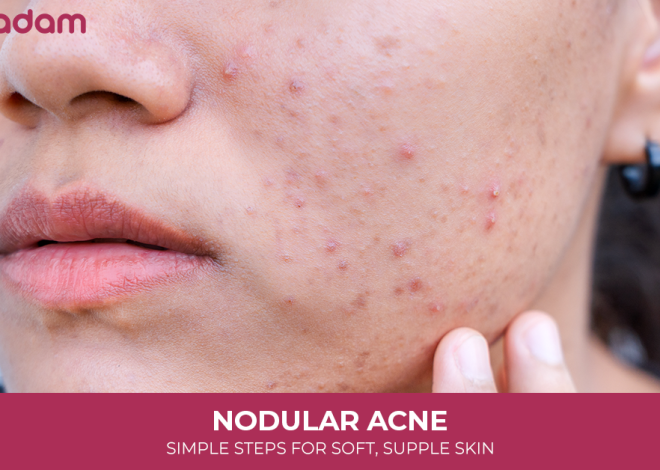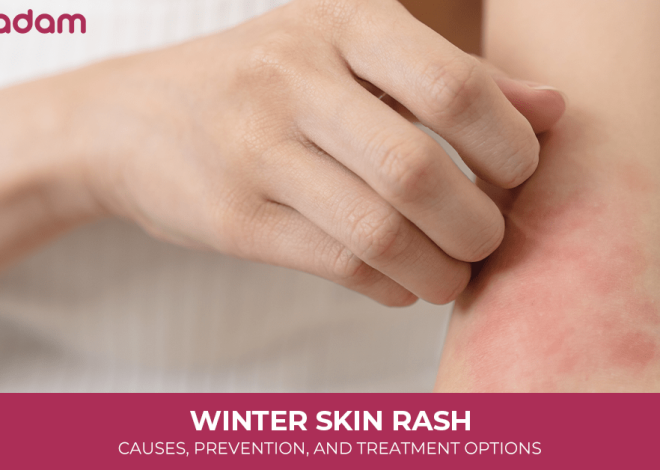
How to Know Your Skin Type: Simple Tips to Understand Your Skin Better
In the modern-day world where your face speaks for itself, one cannot by any means undermine its nourishment and wellbeing, and to do that, you must acknowledge how your skin tends to deal with everything that is around you.
Each skin type has unique characteristics and needs that might affect the look and feel of your complexion. So while building a skincare routine, it’s important to begin by understanding how to know your skin type. This will help you choose skincare products designed specifically for your skin’s unique needs.

Table of Contents
What are the 5 Different Skin Types
Before exploring how to determine your skin type, knowing about skin types like dry, normal, oily, combination, or sensitive skin will help figure out how to find out your skin type better for your skin needs.
Here’s a more detailed look at each type:
Normal Skin:This skin type is well-balanced, soft, and has a radiant, healthy complexion. It typically has fine pores and minimal blemishes.
Dry Skin: Dry skin lacks moisture and may appear matte, dull, rough, or flaky. It can also be prone to redness and irritation.
Oily Skin: Oily skin produces excessive sebum, resulting in a shiny, glossy appearance and enlarged pores. It may also be prone to blackheads and pimples.
Combination Skin:This skin type combines characteristics of both oily and dry skin, often with an oily T-zone (forehead, nose, and chin) and dry cheeks.
Sensitive Skin: Sensitive skin is more prone to reactions like redness, itching, burning, and dryness. Various factors, including environmental irritants and certain skincare products, can trigger it.
Can Your Skin Type Change Over Time?
This is yet another important question or variable that will help know what type of skin do I have, or how do you know your skin type with much clarity.
The real complication lies in the fact that your skin type can change, and most probably will at some point as we grow with age. During the teenage phase, for example, it’s quite common to have blemish-free or oily skin.
But having oily skin is not a permanent state of nature. As you get older, your skin tends to get drier (along with a host of other changes ). Thus, oily skin is quite a common appearance while you’re young, and drier skin is obvious while you grow older.
Moreover, the climatic conditions might also impact your skin type. Hot climate and humidity are often linked with oilier skin, while cold , dry air is linked with dryness.
Recommended You: Daily Skincare Regime

How To Determine Your Skin Type?
There are two straightforward methods on how can I know my skin type or how to tell what skin type you have.
Wondering how can I know my skin type and how to tell what skin type you have? Figuring this out requires close observation, which you can do using two simple methods. This will help you become more comfortable with the question, so you don’t have to think too much about it.
A. The bare-faced method
1. Properly cleanse your face using a mild cleanser
2. Pat dry and refrain from using any products for about an hour.
3. Pay close attention to how your skin feels and looks after a while.
Analysis
- If your skin feels itchy and flaky, these are signs of having dry skin. On the other hand, if your skin feels shiny and sticky, you might have an oily skin tone
- It’s a sign of combination skin if you have oil on the T-zone and dryness on the cheeks.
- You have sensitive skin if your skin feels itchy or inflamed.
- Luckily, if your skin shows none of these specific signs and is at ease, it indicates normal skin.
B. The Blotting Sheet Test
1 . Press a blotting sheet gently on various parts of the face (like nose, cheeks, chin, forehead ).
2. To assess the oil quantity on your skin, hold the sheet in front of the light during midday or evening.
Analysis
- The sticky and oily appearance of the sheet indicates that you have oily skin.
- The sheet revealing oil from the T-zone and no oil from the cheeks shows that you have combination skin.
- Fully dry skin and very little oil on the surface of the sheet from the entire face shows that you have dry skin.
- Normal skin implies minimal oil on sheets.
- At last, if your skin shows signs of being inflamed or sensitive. This is an indication of having sensitive skin.
All these are at-home tips for how to find your skin type. You can also look forward to getting professional tips for a deep and precise analysis of the skin type.
More Information For You: Biggest Skincare Mistakes

How to Tell Your Skin Type, According to Skin Specialists
Following is a detailed outline on how do i know my skin type as per dermatologists’ approved signs and characteristics:
| Skin Type | Common signs | Tip from dermatologists |
| Oily | Enlarged pores, frequent breakouts | Apply gentle cleansers and avoid over-washing, which can trigger more oil production. |
| Dry | Red patches, dullness, and visible flaking. | Use moisturizers with hyaluronic acid and ceramides. |
| Combination | Shiny forehead or nose, dry cheeks. | Use targeted products, skip harsh products that unbalance skin. |
| Sensitive | Itching, redness, breakouts, dryness. | Select a fragrance-free, hypoallergenic, and minimal ingredients product. |
| Normal | Few blemishes, even tone, no sensitivity. | Keep a simple routine, use SPF daily, and stay hydrated. |
Don’t Miss: Avoid These 7 Skincare Mistakes That Worsen Acne
Conclusion
It is now clear how to know your skin type, both through methods and according to dermatologists. People can also assess their skin type by examining its appearance and feel after washing.
While skin tone plays a role in how a person’s skin looks, it is important to be aware of any changes in the skin’s appearance. People should also consult a dermatologist about any new moles or rashes.
FAQs
What is my skin type?
A skin type is a category that people use to describe how dry, oily, or sensitive the skin is. Knowing the skin type helps people learn how to care for it.
How do you know what type of skin you have?
To determine your skin type, observe your skin’s appearance and feel after washing your face and waiting for about 30 minutes.
Which skin type is more attractive?
Average skin colors tend to be more attractive. A tan is a typical average skin color and is very attractive to most people.
Is there an app that tells about your skin type?
Yes, some apps can help determine your skin type using AI technology.
Which is the rarest skin type?
The rarest skin type is “Normal” or “Balanced” skin. This is skin that is neither too oily nor too dry, with an even texture and no visible imperfections.
How do you define an indian skin type?
The typical features of indian skin types include:
- Wheatish complexion ranging from light yellow to deep brown.
- Thicker and prone to tanning but less prone to sunburn.
- Warm undertones and prone to hyperpigmentation.
What skin type ages the fastest?
Dry skin is often more prone to ageing, because dry skin is thinner and more prone to fine lines and wrinkles due to reduced elasticity and moisture.
Which is better, oily or dry skin?
Neither of the two is inherently better. Both kinds of skin have their pros and cons. Oily skin may be prone to clogged pores and blemishes. Dry skin causes wrinkles and irritation.
How do I assess my skin tone?
To assess your skin tone, closely look at the color of your veins and compare your skin to white paper or clothing in natural light.
Which skin type is regarded as the best?
Normal skin is considered the ideal skin type as it is well-balanced and generally less prone to problems like dryness, oiliness, and breakouts.
How to determine skin type naturally?
To naturally determine your skin type, check your skin’s appearance and feel after cleansing and let it air dry for about half an hour. You can also implement a blotting paper test to assess oil production in different areas of your face.
How do I know what skin type I have using the bare face test?
Begin by cleansing your face and let it dry for 30-60 minutes without applying any products. Next, observe and feel your skin. It includes the following steps :
- Cleanse and Dry
- Wait and Observe
- Examine
- Feel and Observe



